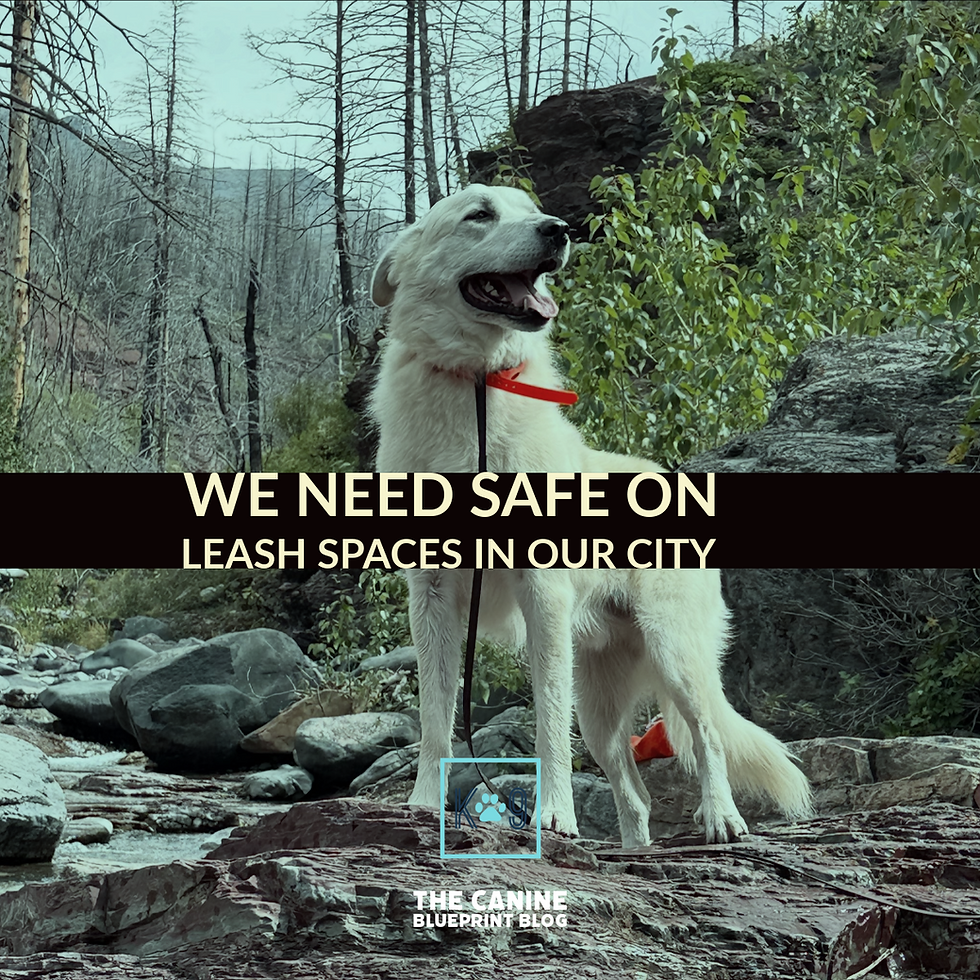It’s Not Abuse — It’s Just Learning: How Our Trauma Warps Our View of Dog Training
- jenna sooley

- Jul 11
- 3 min read
The term “positive punishment” has become the new scarlet letter of the dog training world. Say it online and you’ll likely get accused of being outdated, cruel, or worse — abusive. But here’s the truth most people miss:
You use all four quadrants of operant conditioning in your daily life — and none of it feels like abuse when you’re the one doing it.
So why are we demonizing their use with dogs?
Let’s strip away the technical terms and talk about what these things really mean:
Positive Reinforcement – You add something your dog likes to increase a behavior
→ Giving praise or food when they sit
Negative Reinforcement – You remove something they don’t like to increase behavior
→ Moving away from another dog when yours walks calmly
Positive Punishment – You add something unpleasant to decrease a behavior
→ Saying “no” or making a sound to interrupt jumping
Negative Punishment – You take away something they want to decrease behavior
→ Stopping a game of tug when they nip your hand
These aren’t “training methods.” They’re just how learning works — for dogs, humans, and every living creature.
💡 You’re Already Doing This
Most people using “only positive reinforcement” are still using the other quadrants — they just don’t realize it. For example:
You ignore your dog when they bark at you for attention. That’s negative punishment.
You say “ah-ah” when they try to grab food off the counter. That’s positive punishment.
You stop tugging when they get too mouthy. That’s negative punishment.
You walk faster to get past a scary dog and feel relief. That’s negative reinforcement.
You call your dog in a high-pitched voice to move them away from something gross. That’s positive reinforcement.
None of this is abusive. It’s just… life.
And ironically, it’s the people trying the hardest to avoid “using punishment” who often end up using it inconsistently or unconsciously — which confuses dogs more than anything.
🚸 Why Trauma Makes Us Over-Correct
We’re a generation reckoning with our own childhood trauma. Many of us were punished unfairly, shamed instead of guided, or made to feel afraid of making mistakes. So when we hear the word “punishment,” we flinch.
But dogs are not children.
They don’t lie awake at night feeling emotionally invalidated because you said “no.”
They don’t spiral into guilt when you interrupt a behavior.
They don’t need open-ended choices all day long to feel empowered.
They need structure, clarity, and consistency — not moral confusion.
Right now, we’re seeing more reactive, anxious, and unstable dogs than ever before. And it’s not because people aren’t trying — it’s because they’re trying so hard to be kind that they forget to be clear.
Let’s be real:
A dog without boundaries doesn’t feel “free,” they feel lost.
A dog who never hears “no” doesn’t feel empowered, they feel unchecked.
A dog without routine isn’t fulfilled, they’re frantic.
You can love your dog deeply and still provide accountability.
You can offer enrichment and affection and still say, “That’s not okay.”
And you don’t need a tool or harsh correction to do that. You just need to stop being afraid of normal behavior patterns that exist in every relationship.
Here’s the hard truth:
Avoiding the other quadrants doesn’t make you a better trainer. It makes you an incomplete one.
If you only ever study one side of learning theory — or worse, pretend the others don’t exist — you will never truly understand or apply any of it well. You’re working with half a map, expecting to arrive at a full destination.
Learning how each quadrant works doesn’t mean using all of them all the time — it means knowing which one to use, when to use it, and how to do so with fairness and clarity.
The moment we attach morality to the mechanics of learning, we stop training the dog in front of us and start reacting from our own baggage.
If we want stable, confident dogs in our homes — dogs who understand what’s expected of them and trust us to lead — then we have to stop being afraid of how they learn.
You’re already using all four quadrants every day.
So instead of avoiding them, let’s learn how to use them with clarity, kindness, and responsibility.
Because your dog doesn’t need you to be perfect.
They just need you to be consistent.




Comments